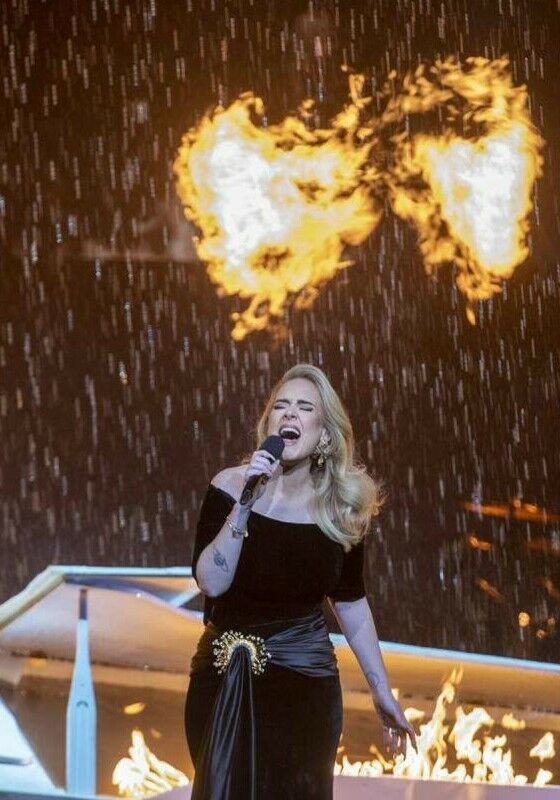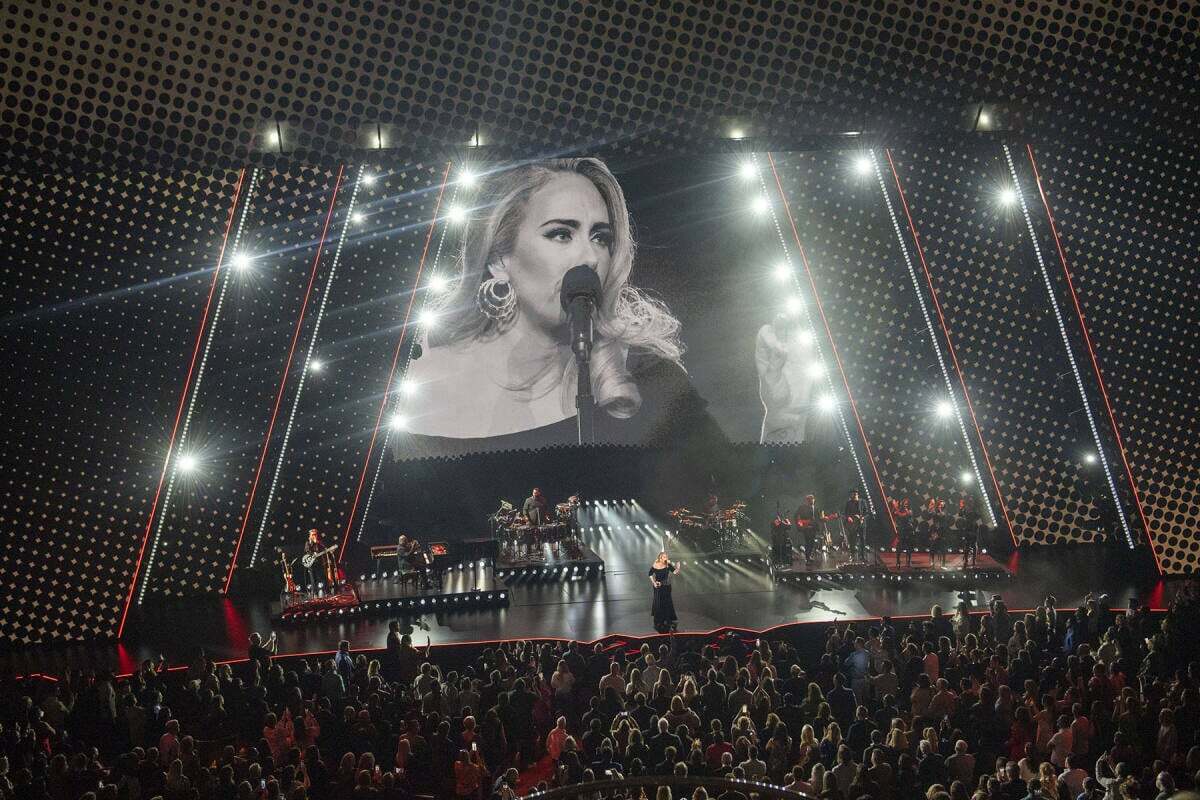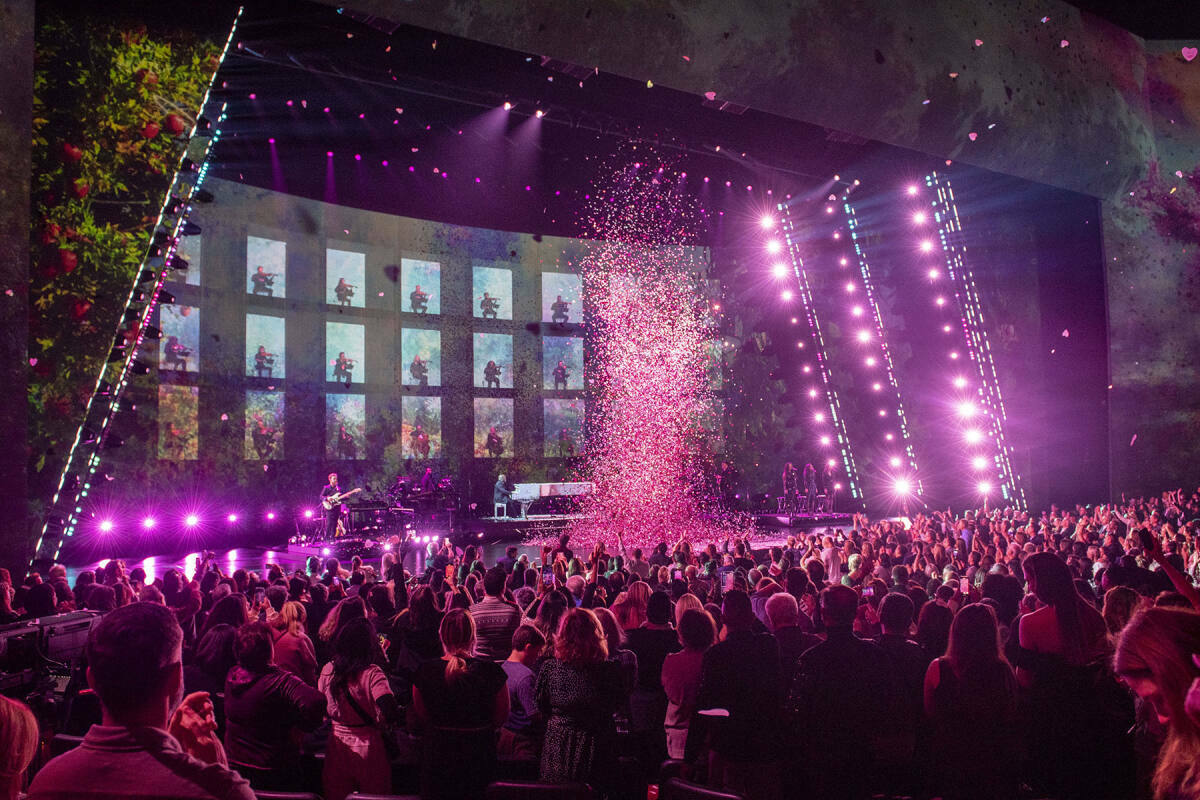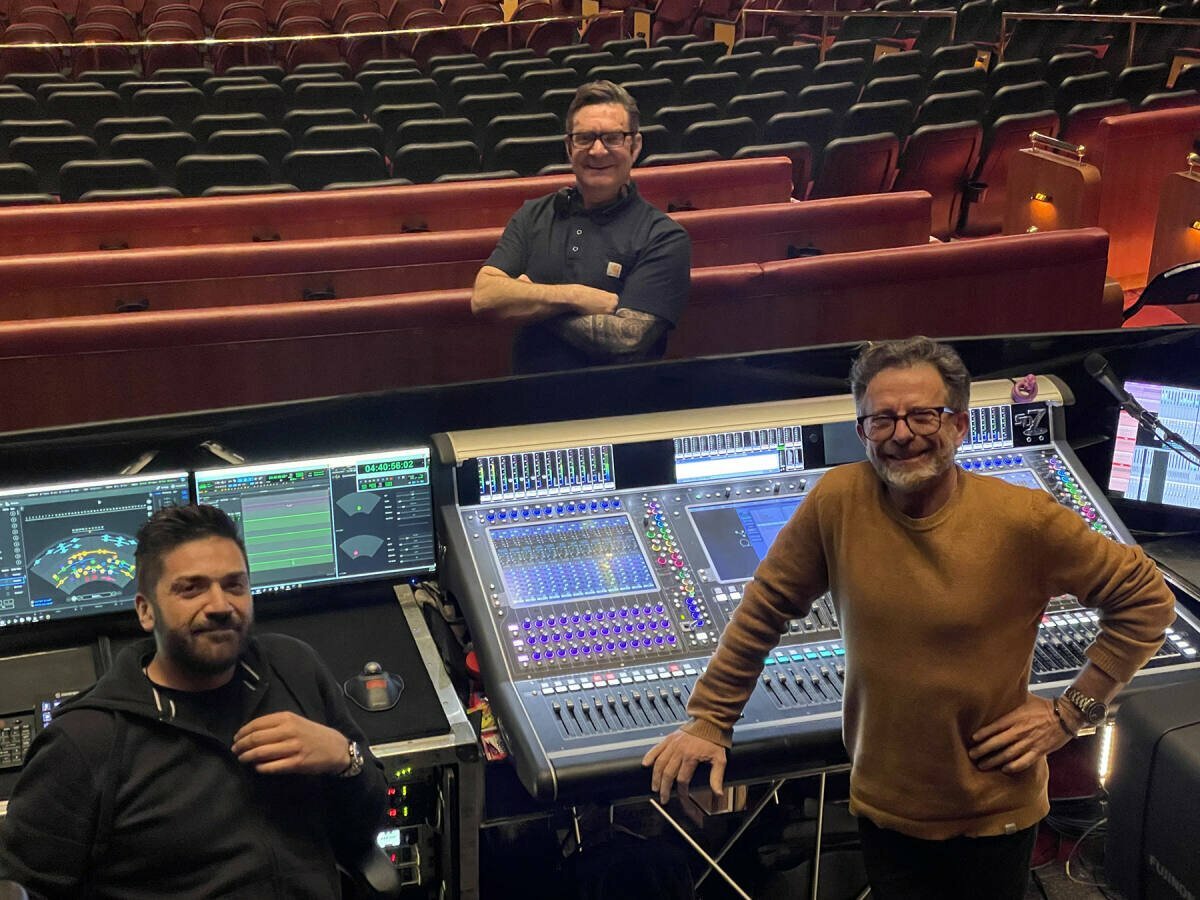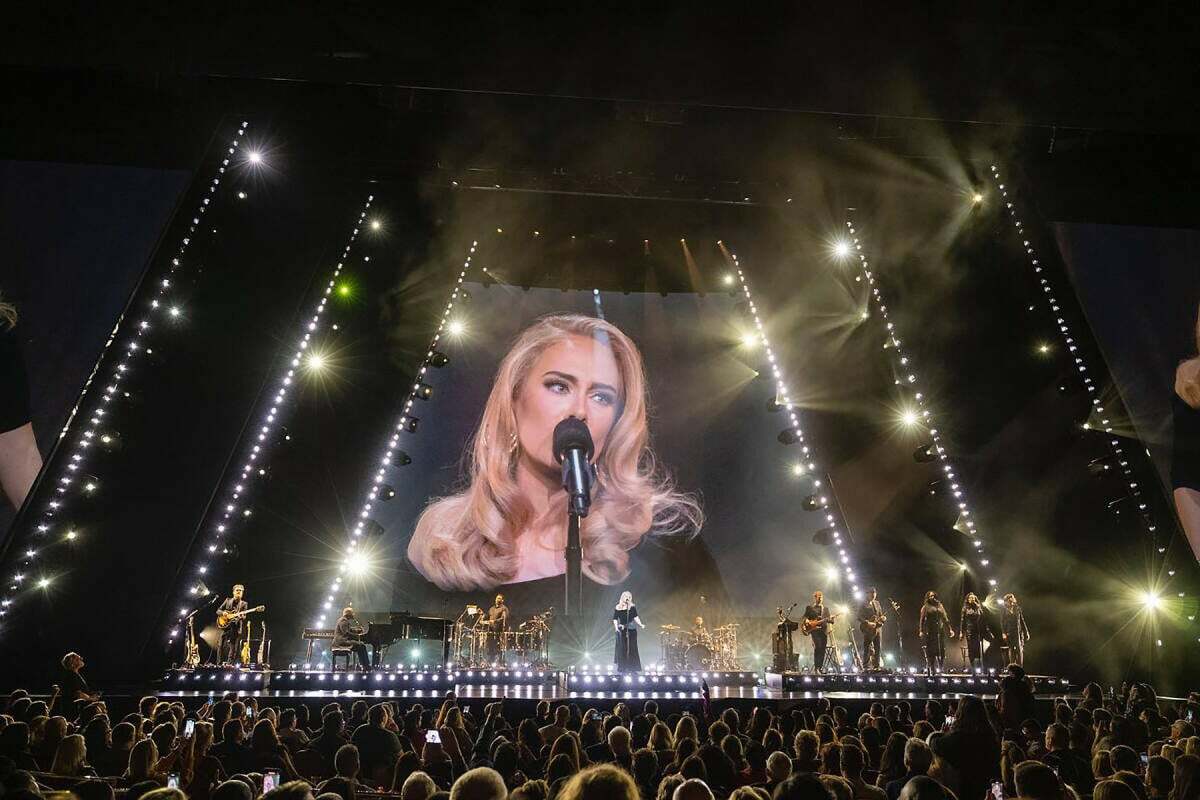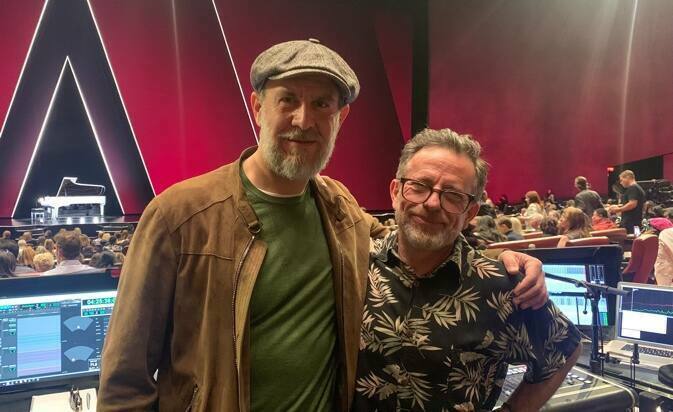Ten months after tearfully confessing “my show ain’t ready” just 24 hours before the opening night of her Las Vegas residency, Adele has been making up for lost time with a five-month series of Weekends With Adele shows at The Colosseum at Caesars Palace...
The reviews have been phenomenal – clearly postponing the show was worth the wait – giving diehard fans a chance to see the formidable vocalist up close and personal, dressed to the nines in a series of exquisite floor length black designer dresses (although she will gladly reveal her cheap socks from Amazon underneath). Her voice – sublime as always – effortlessly fills the 4,000+ capacity venue with her biggest hits, but it’s the personal touches that are also a draw for fans.
Between belting out emotional ballads, the 16-time Grammy Award winner pads out the show with her trademark self deprecating banter; she swears, cries, pauses the show for proposals, blasts merch into the crowd with a T-shirt gun, takes selfies, wanders into the crowd to talk to fans, and even moves people with “the worst f**king seats in the house” to sit right by the stage.
But when it comes to the vocals, she really delivers. With past residences being held by intimidating vocalists including Celine Dion and Mariah Carey, Adele had some big shoes to fill – and the sound, especially after the 10 month delay, had to be pristine.
“Adele is very aware of the importance of sound quality – it’s always been a high priority on her earlier tours,” nods Johnny Keirle, the production’s system engineer, who began touring with Adele in 2016. “We began the conversation about using L-Acoustics’ L-ISA early on with Adele and her management team.”
